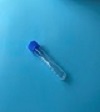
N-Methylhistamine, 24-hour urine-994
Test info
MAST cell disease
Mastocytosis
1-Methylhistamine
Urinary N-Methylhistamine
- Screening for and monitoring of mastocytosis and disorders of systemic mast-cell activation, such as anaphylaxis and other forms of severe systemic allergic reactions using 24-hour urine collection specimens
- Monitoring therapeutic progress in conditions that are associated with secondary, localized, low-grade persistent, mast-cell proliferation and activation such as interstitial cystitis
Specimen
Patient must not be taking monoamine oxidase inhibitors (MAOIs) or aminoguanidine as these medications increase N-methylhistamine (NMH) levels
How to collect a 24-hr urine sample
Application of temperature controls must occur within 4 hours of completion of the collection.
- Measure and record total volume
- Mix well
- Transfer 5 mL (minimum 3.0 mL) to a Screw cap transfer vial/tube (Mayo T465), labelled as urine
- Total volume
Refrigerated (preferred) - 28 days
Frozen - 28 days
Ambient - 14 days
Performance
NMH1D: Liquid Chromatography-Tandem Mass Spectrometry (LC-MS/MS)
CRT24: Enzymatic Colorimetric Assay
Clinical and Interpretive info
0 - 5 years: 120 - 510 µg/g creatinine
6 - 16 years: 70 - 330 µg/g creatinine
> 16 years: 30 - 200 µg/g creatinine
N-methylhistamine (NMH) is the major metabolite of histamine, which is produced by mast cells. Increased histamine production is seen in conditions associated with increased mast-cell activity, such as allergic reactions, but also in mast-cell proliferation disorders, particularly mastocytosis.
Mastocytosis is a rare disease. Its most common form, urticaria pigmentosa (UP), affects the skin and is characterized by multiple persistent small reddish-brown lesions that result from infiltration of the skin by mast cells. Systemic mastocytosis is caused by the accumulation of mast cells in other tissues and can affect organs such as the liver, spleen, bone marrow, and small intestine. The mast-cell proliferation in systemic mastocytosis can be either benign or malignant. In children, benign systemic mastocytosis tends to resolve over time, while in most, but not all adults, the disease is progressive. Systemic mastocytosis may or may not be accompanied by UP.(1,2) Patients with UP or systemic mastocytosis can have symptoms ranging from itching, gastrointestinal distress, bone pain, and headaches; to flushing and anaphylactic shock.
Diagnosis of mastocytosis is made by bone marrow biopsy.

